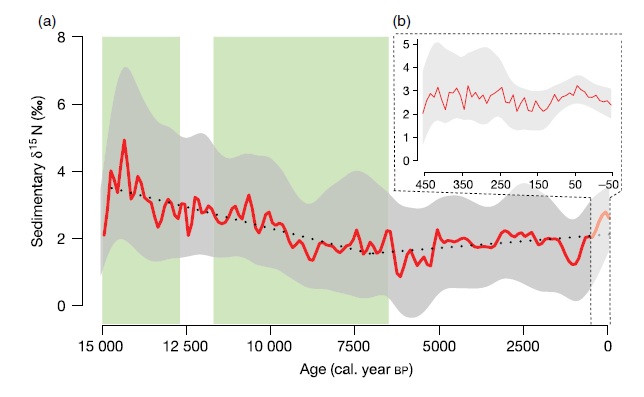Last year, a throng of palaeoecologists from the world around descended into Oxford to discuss what the 50 most pressing questions in palaeoecology are. I was happy to see some great scientists and communicators among them, including Anson Mackay, Jacquelyn Gill, and Gavin Simpson, which gives me real hope that these questions were crafted with more than just ‘science for the sake of science’ in mind, and I think this really shines through in their article.
The summarised results of the meeting can be found in an open access article here. They essentially fall into several categories: human-environment interactions in the Anthropocene, a field with clear policy-related interests; biodiversity, conservation and novel ecosystems, with impacts on preserving our environment and its biota; biodiversity over long time-scales, which is where palaeontology makes its mark!; ecosystem processes and biogeochemical cycling, which is where geologists, those most awesome and sexy of scientists, come in; synthesis of multiple records, which is about reconciling different time scales (if of interest, see event below); and developments in palaeoecology, which is all about the underpinning of this important field.

How nitrogen has changed in the Pleistocene and Holocene – how can we use this to safeguard the future of the nitrogen cycle? (source)
What would I like to see done with this article? I’d love to see it distributed with a letter signed by all participants to several policy relevant parties, including the Science and Technology Committees of both the House of Commons and House of Lords, the Heads of DEFRA (Department for environment, fisheries, and rural affairs), DECC (Department for Climate Change), and the EA (Environment Agency), as well as any other ecology-related policy units. Oh, and NERC (National Environmental Research Council – one of the major funders of ecological research in the UK). And the Society of Biology, and the British Ecological Society, and the Palaeontological Association. And the global equivalents. A document like this is short, sweet, and concise, and could serve well as a primer in the ecological-policy interface. Just a thought.
If this topic is one that interests you, then there’s a conference at the Natural History Museum in London on the 1st of April, Challenges in Macroecology – Scaling the Time Barrier. It’s dirt cheap, and should be interesting and useful. Hope to see some of you there!

iteration23
One word: PETM.
The best candidate for a sudden GHG megarelease (ie the closest know parallel to the “Anthropocene”)